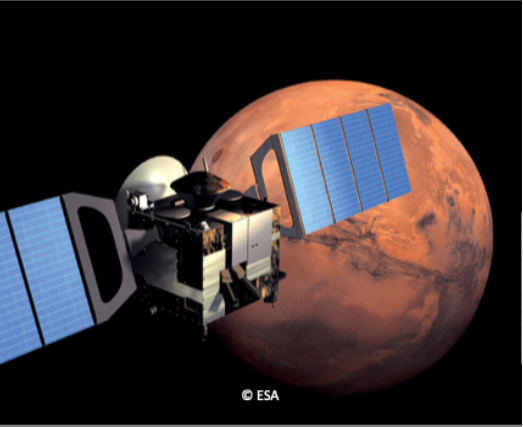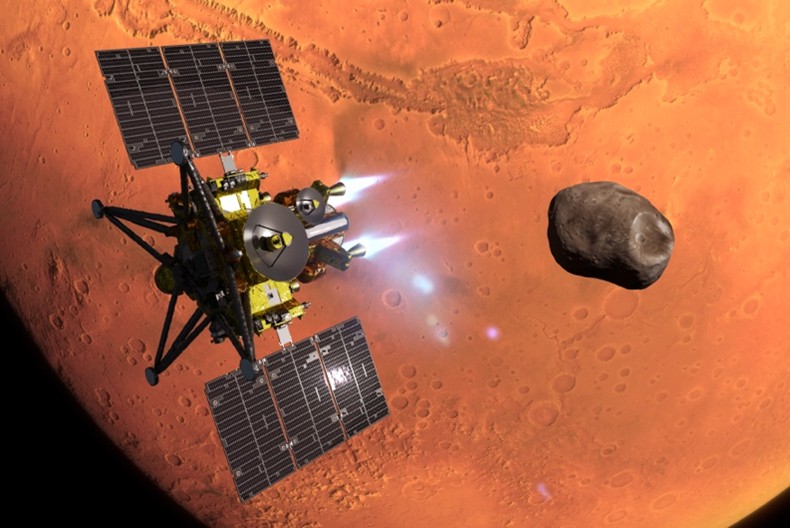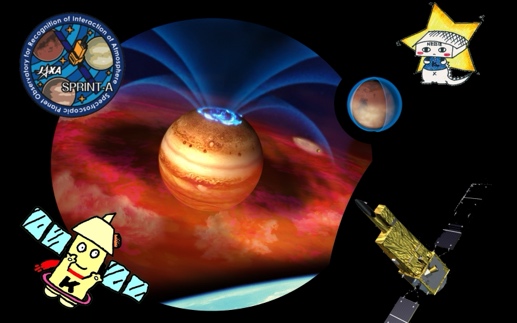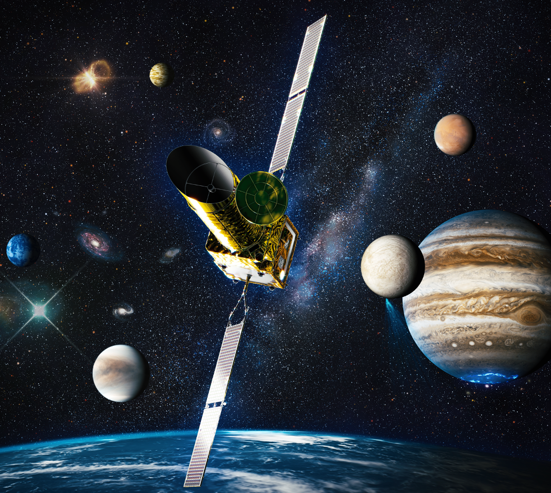Mars
I analyze the Martian atmosphere using observational data obtained by the near-infrared imaging spectrometer OMEGA onboard the European orbiter Mars Express. The Martian atmosphere contains abundant dust particles, which absorb and scatter sunlight, giving rise to various weather phenomena unique to Mars. To understand these phenomena, I have been collaborating with a French research team to develop a system that retrieve the dust optical depth, dust altitude profile, and surface pressure. This system will be applied to future Mars exploration missions, including the MMX (Martian Moons eXploration) mission scheduled for launch in 2026. Written by KAZAMA Akira.
MMX (Martian Moons eXploration) is a mission led by JAXA (Japan Aerospace Exploration Agency) to explore Mars’ two moons, Phobos and Deimos. Scheduled for launch in 2026 and return in 2031, MMX aims to reveal the origins of the moons by collecting samples from Phobos and bringing them back to Earth.
MMX is equipped with several scientific instruments, one of which is the MMX Infrared Spectrometer (MIRS), which will analyze infrared radiation emitted from the surface of the satellite to determine their composition, such as minerals and water ice as well as to observe the Martian atmosphere.
Tohoku University is involved in the development of MIRS and is developing analytical methods to investigate Martian meteorological phenomena from infrared spectroscopic data from MIRS.
ISAS MMX project
Illustration by JAXA
The Hisaki satellite is equipped with an extreme ultraviolet spectrograph and is the world’s first space telescope designed for planetary observations. By observing the time variable aspects of atmospheres of terrestrial planets such as Venus and Mars, and hot plasma in the Jovian magnetosphere, Hisaki provided opportunity to study the atmospheric evolution of terrestrial planets in the Solar System and the origin of mass and energy in Jupiter’s magnetospheric plasma. The Hisaki satellite was launched on 14 September 2013. Aft¬er more than 10 years of continuous extreme ultraviolet spectroscopic observations, the satellite was decommissioned on 8 December 2023.
The LAPYUTA mission aims “to explore the habitable environment of the Universe” and “to understand the origin of matter and space in the Universe”. From unresolved issues related to the two goals, we selected four scientific objectives to be addressed in the 2030s: (1) habitable environments of solar system bodies, (2) atmospheres of exoplanets, (3) galaxy formation, and (4) the origin of heavy elements, which will be realized by the ultraviolet space telescope. LAPYUTA was selected as one of candidates of JAXA’s M-class mission, and aims to realize a high-resolution, high-sensitivity ultraviolet telescope by optimizing the performance requirements to the science objectives.












